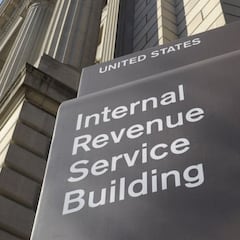Good Friday Agreement: what is it and what does it consist of?
As President Joe Biden visits Ireland to reflect on the historic peace deal 25 years on, we look back on why it was so important to so many.


US President Joe Biden sent his apologies early about not being a likely attendee to King Charles’ Coronation on May 6, but one date that was fixed firmly in his schedule was an appearance in Ireland to mark the 25th anniversary of the Good Friday Agreement. But how much do we really know about the deal made at the end of the last century, why did America play a role in it, and what risks are there to it now? Let’s take a look...
Hello, Northern Ireland!
— President Biden (@POTUS) April 12, 2023
It's so great to be back. pic.twitter.com/A4PjLONoic
What is the Good Friday Agreement?
The Good Friday Agreement, also known as the Belfast Agreement, is a historic peace agreement that was signed on April 10, 1998, in Belfast, Northern Ireland, between the British and Irish governments, as well as most of the political parties in Northern Ireland. As the name suggests, pen was put to paper on the celebrated day in the Easter calendar.
The agreement aimed to end decades of sectarian violence in Northern Ireland, known as “The Troubles,” which had resulted in the deaths of over 3,500 people. It established a power-sharing government in Northern Ireland, with both unionist and nationalist parties represented, and recognised the principle of consent, which allowed for the possibility of Northern Ireland leaving the United Kingdom and joining a united Ireland if that was the democratic wish of the people. Within the deal it established a number of institutions to promote reconciliation, including the Northern Ireland Human Rights Commission, the Equality Commission for Northern Ireland, and the Independent Commission for the Location of Victims’ Remains.
In order to ratify the agreement, referendums were held in both Northern Ireland and the Republic of Ireland, with over 70% of voters in each jurisdiction supporting it. Since its signing, violence in Northern Ireland has decreased significantly, and many of the institutions established by the agreement have played an important role in promoting peace and reconciliation.
Despite the successes, however, the agreement has faced ongoing challenges, including disagreements over issues such as parades, flags, and the legacy of the conflict. The Brexit process -- which saw the UK (and therefore Northern Ireland) vote to leave the European Union -- has also raised concerns about the potential impact on the peace process and the open border between Northern Ireland and the Republic of Ireland, which was established as part of the agreement.
Securing the Good Friday Agreement is one of the Labour Party's proudest achievements.
— The Labour Party (@UKLabour) April 10, 2023
Today we pay tribute to the incredible Mo Mowlam, who was instrumental in making it happen.
Labour will always work to secure peace and prosperity for future generations in Northern Ireland. pic.twitter.com/rcLHGqmozv
Who were the key people involved in the Good Friday Agreement?
For something so complex and emotional, with far reaching implications, it is unsurprising that there were many key players involved in the Good Friday Agreement negotiations. This included political leaders, activists, and community representatives. Here are some of the most prominent:
- Tony Blair - then British Prime Minister, representing the Labour party, who played a crucial role in the peace negotiations and was a signatory to the agreement.
- Bertie Ahern - then Taoiseach (Irish Prime Minister), who worked closely with Tony Blair to broker the agreement.
- Bill Clinton - then US President, who played an important role in supporting the peace process and encouraging the parties to reach an agreement.
- George Mitchell - former US Senator, who chaired the negotiations and was instrumental in brokering the final agreement.
- David Trimble - leader of the Ulster Unionist Party, who played a key role in securing support for the agreement from the unionist community.
- John Hume - leader of the Social Democratic and Labour Party, who was a key architect of the peace process and played a central role in negotiating the agreement.
- Gerry Adams - leader of Sinn Fein, who was instrumental in securing support for the agreement from the nationalist community.
- Mo Mowlam - then British Secretary of State for Northern Ireland, who played a crucial role in the peace negotiations and was widely praised for her efforts to bring about a settlement.
The agreement was the result of years of hard work and cooperation among a wide range of political leaders, activists, and community representatives on both sides of the conflict. Even a quarter of a century later though, and with the issues caused by Brexit, it remains a fragile situation that cannot be taken for granted.
25 years ago we chose peace.
— Irish Foreign Ministry (@dfatirl) April 10, 2023
Today we think about what the Good Friday Agreement ended and made possible, and how we can make the next 25 years even brighter.
Visit https://t.co/c2Z1KepWlJ to learn more about #GFA25 pic.twitter.com/IVB9s7IH0T
Why did the USA play a role in the Good Friday Agreement?
The United States became involved in the Northern Ireland peace process in the 1990s for a number of reasons. First and foremost, there was a significant Irish-American community that was politically active and had been lobbying for US involvement in the conflict for years. Many members of this community had connections to Northern Ireland and were deeply concerned about the ongoing violence and instability there.
Additionally, the US government had strategic interests in supporting the peace process. The United States had long been a close ally of the United Kingdom and had a vested interest in maintaining stability in the region. The US also saw an opportunity to advance its broader foreign policy objectives by helping to broker a peace deal in Northern Ireland, which could serve as a model for resolving other conflicts around the world.
25 years ago, Northern Ireland’s leaders chose peace.
— President Biden (@POTUS) April 10, 2023
The Belfast/Good Friday Agreement ended decades of violence and brought stability.
I look forward to marking the anniversary in Belfast, underscoring the U.S. commitment to preserving peace and encouraging prosperity.
Related stories
Another factor was that there was strong bipartisan support in the US Congress for engagement in Northern Ireland, and several key political figures -- including the aforementioned President Bill Clinton -- were personally committed to the peace process. Clinton played a particularly important role in the negotiations, using his political capital and international influence to encourage the parties to reach an agreement.
Overall, and hence why it is no surprise to see Joe Biden make a visit for the 25th anniversary a priority, US involvement was seen as a crucial factor in bringing about the Good Friday Agreement and ending decades of violence in Northern Ireland.

